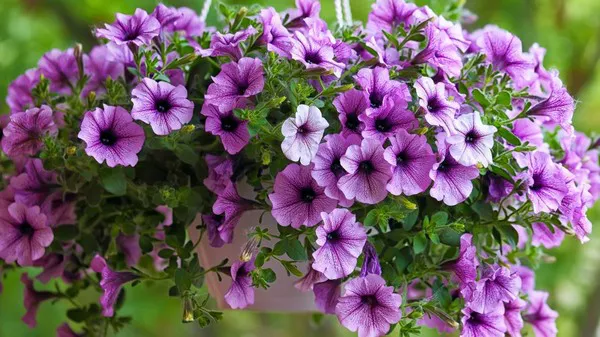In the world of botany, flowers are arguably one of the most enchanting and fascinating features of plants. Beyond their aesthetic appeal, flowers serve a multitude of essential purposes in the plant kingdom.
The Role of Flowers in Reproduction
At the heart of the matter, the primary function of a flower in the plant world is reproduction. Flowers are the reproductive organs of a plant, serving as the site for the formation of seeds, the next generation of plants. This essential role is fundamental to the survival of plant species.
Attraction for Pollinators
One of the most captivating aspects of flowers is their ability to attract pollinators. Through the production of vivid colors, alluring scents, and nectar, plants entice a variety of pollinators, including bees, butterflies, and hummingbirds. These visitors unknowingly aid in the pollination process, transferring pollen from one flower to another, facilitating fertilization.
Adaptation to Different Pollinators
The diverse shapes and characteristics of flowers are intricately adapted to attract specific pollinators. Some flowers, like tubular blossoms, are designed for long-tongued pollinators such as moths and butterflies. Others, like daisy-like blooms, are tailored for short-tongued pollinators like bees. These specialized adaptations increase the likelihood of successful pollination.
The Diversity of Floral Strategies
Plants have evolved a wide array of floral strategies to maximize their chances of reproduction. From the complex and specialized structures of orchids to the simple, open forms of dandelions, these strategies ensure that a variety of environments and ecological niches are filled with blooming flora.
Fertilization and Seed Production
Once a flower has successfully attracted a pollinator, it is poised for the critical process of fertilization. Pollen grains are transferred from the male reproductive organ (stamen) to the female reproductive organ (pistil) of a flower. Fertilization leads to the formation of seeds, encapsulating the genetic information necessary for a new plant’s development.
Seed Dispersal
In addition to the initial phase of reproduction, flowers also play a vital role in seed dispersal. After seeds have matured, the flower often transforms into a fruit. This fruit serves as a vessel for seeds, many of which are equipped with adaptations for dispersal by wind, water, or animals.
Ecological Significance of Flowers
Flowers are not only crucial to plants but also hold a profound ecological significance. They form the foundation of numerous ecosystems and food chains, as they provide sustenance for countless herbivorous animals. Without flowers, many organisms that rely on nectar and pollen as their primary food source would face extinction.
The Interconnected Web of Life
Flowers are essential components of ecosystems due to the interconnected web of life. When pollinators visit flowers to collect nectar or pollen, they transfer pollen from one plant to another, aiding in cross-pollination. This ecological interaction results in greater genetic diversity among plants, making them more adaptable to changing environmental conditions.
Importance in Agriculture
The significance of flowers extends beyond the wild; they are equally vital in agriculture. Many crops, from fruits to vegetables, rely on successful pollination to produce the food we consume. Bees, in particular, play a crucial role in commercial agriculture, making the presence of flowers indispensable.
Evolutionary History of Flowers
The presence of flowers on plants is a remarkable result of millions of years of evolutionary history. Flowers are considered a relatively recent development in the plant kingdom, emerging around 140 million years ago. Their evolution has been driven by natural selection, adapting plants to their specific environments and pollinators.
The Emergence of Flowers
The exact origins of flowers remain a topic of scientific debate. Nevertheless, it is widely accepted that they evolved from cone-bearing plants, such as gymnosperms. These early, non-flowering plants relied on wind pollination, which is far less efficient than insect-mediated pollination.
Coevolution with Pollinators
The rise of flowers coincided with the emergence of insect pollinators, setting the stage for a fascinating phenomenon known as coevolution. Plants and their pollinators have coevolved to develop specialized adaptations that benefit both parties. This mutualistic relationship has led to the incredible diversity of flowers we see today.
Floral Diversity and Speciation
The vast diversity of flowers plays a pivotal role in the speciation of plants. Through the evolution of unique floral traits, plants can attract specific pollinators, reducing the likelihood of hybridization with closely related species. This floral diversity contributes to the rich tapestry of plant life on Earth.
The Role of Genetics
The genetic basis for flower development is a complex and intricate process. Numerous genes are involved in the regulation of flower formation, controlling factors such as petal color, shape, and size. Understanding the genetics behind flower development sheds light on the evolution of this remarkable structure.
Human Cultivation of Flowers
The human fascination with flowers has led to their extensive cultivation and selective breeding for aesthetic purposes. The vast array of flower species available today is a testament to our fascination with these botanical wonders. From ornamental gardens to floral arrangements, flowers have a special place in human culture.
Medicinal and Therapeutic Uses
Beyond their visual and olfactory appeal, flowers have been used for their medicinal and therapeutic properties for centuries. Many cultures have harnessed the healing potential of various flowers, such as chamomile, lavender, and calendula, in traditional medicine and aromatherapy.
Conclusion
The question of why plants have flowers is a multifaceted one, touching upon fundamental aspects of biology, ecology, and evolution. Flowers, as the reproductive organs of plants, serve as hubs for the continuation of plant species and the survival of diverse ecosystems. The intricate dance of pollinators and plants, coevolutionary processes, and the genetic underpinnings of flower development have all contributed to the emergence of these captivating botanical wonders. In our appreciation of flowers, we not only celebrate their beauty but also acknowledge their central role in shaping the natural world as we know it.


